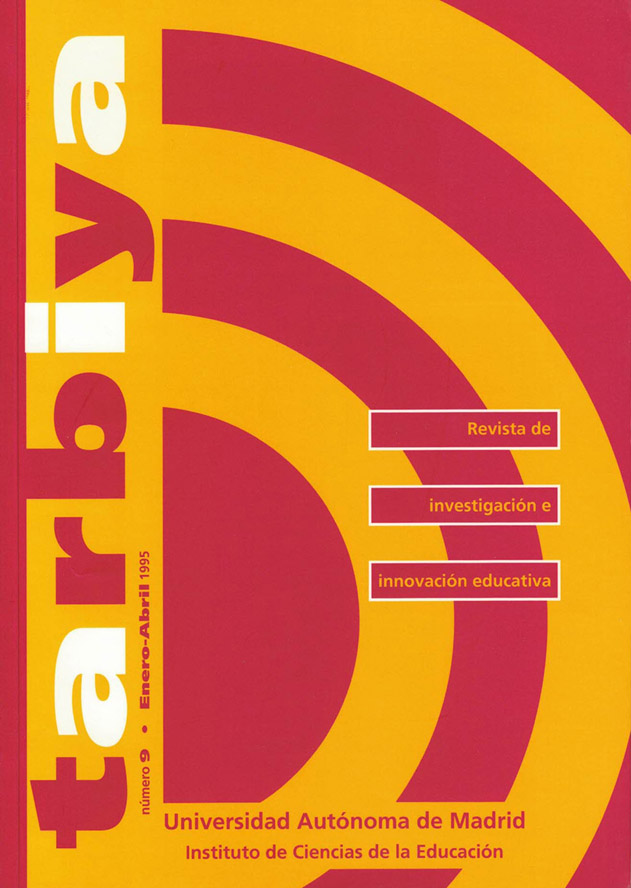Palabras clave:
Ciencia, Tecnología, Sociedad, Reforma educacionalResumen
Este escrito reúne los objetivos globales de la reforma educacional Ciencia-Tecnología-Sociedad. También describe algunos ejemplos exitosos de la misma. Finalmente, se analiza la conexión de este enfoque de enseñanza de las ciencias con la interpretación constructivista del aprendizaje y se presentan algunas recomendaciones.
Descargas
Citas
AMERICAN CHEMICAL SOCIETY (1995). Química en la Comunidad. Wilmington, Delaware: Addison-Wesley Iberoamericana, en prensa.
AMERICAN CHEMICAL SOCIETY (1988, 1993 2ª). Chemistry in the Community. Dubuque: Kenndall-Hunt.
AMERICAN CHEMICAL SOCIETY (1984). Tomorrow: The Report of the Task Force for the Study of Chemistry Education in the United States. Washington, D.C.
ASSOCIATION FOR SCIENCE EDUCATION (1990). SATIS 16-19. Hatfield, UK.
BEARDSLEY, T. (1992). Trends in Science Education: Teaching Real Science. Sci. Am., 267 [10], 78-86.
HEIKKINEN, H. (1987). Decision Making and ChemCom. ChemUnity, 8, 7.
HERRON,J.D. (1982). Science, Society and the Reformation. J. Chem. Educ., 59, 560.
KOBALLA, T.R. (1986). Research within Reach: Science Education. Washington, D.C.: NSTA.
LEWIS, B.B. (1981). Science Teaching and Society, J. Chem. Educ., 58, 704.
LEWIS, J. (1981). Science in Society. Londres: Heinemann Educacional Books.
LIPPINCOTT, W.T., and BODNER, G.M. (1984). Chemical Education: Where we've been; where we are; where we are going. J. Chem. Educ., 61, 843.
LIPPINCOTT, W.T. (1980a). Retrospects and prospects in Chemical Education: A personal view. J. Chem. Educ., 57, 4.
LIPPINCOTT, W.T. (1980b). In appreciation. J. Chem. Educ., 57, 325.
NATIONAL SCIENCE FOUNDATION (s/f). Educating Americans for the 21st Century. Washington, D.C.
NATIONAL SCIENCE TEACHERS ASSOCIATION (1990-1991). Science-technology-society: A New Effort for Providing Appropriate Science for all (Position Statement). En NSTA Handbook. Washington.
NSTA (1985). Science and Technology Education for Tomorrow's World., Washington, D.C.
PHILIPS, P.S. and HUNT, A. (1992). The SATIS Project: A Significant New Development in Post-16 Science Education in the United Kingdom. J. Chem. Educ., 69, 404-407.
SCHWARTZ, A.T.; BUNCE, D.M.; SILBERMAN, R.G.; STANITSKT, C.L.; STRATTON, W.J. y ZIPP, A.P. (1994). Chemistry in Context. Applying Chemistry to Society. A project of the American Chemical Society. Dubuque: Wm. C. Brown Pub.
SOLOMON, J. (1983). Science in a Social Context. Londres: Association for Science Education y Basil Backwell.
STREITBERGER, H.E. (1988). A Method for Teaching Science, Technology and Society Issues in Introductory High School and College Chemistry Classes. J. Chem. Educ., 65, 60-61.
SUTMAN, F.X. and BRUCE, M.H. (1992). Chemistry in the Community-ChemCom: A five-year evaluation. J. Chem. Educ., 69, 564-567.
YAGER, R.E. (1992). Science-Technology-Society as Reform. En The Status of Science-Technology-Society Reform Efforts around the World, ICASE Yearbook. Petersfield, UK: Internacional Council of Associations for Science Education.
YAGER, R.E. (1992). The Constructivist Learning Model: A Must for STS Classrooms. En The Status of Science-Technology-Society Reform Efforts around the World. ICASE Yearbook. Petersfield, UK: International Council of Associations for Science Education.
YAGER, R.E. (ed.) (1992). The Status of Science-Technology-Society Reform Efforts around the World. ICASE Yearbook. Petersfield, UK: International Council of Associations for Science Education.

